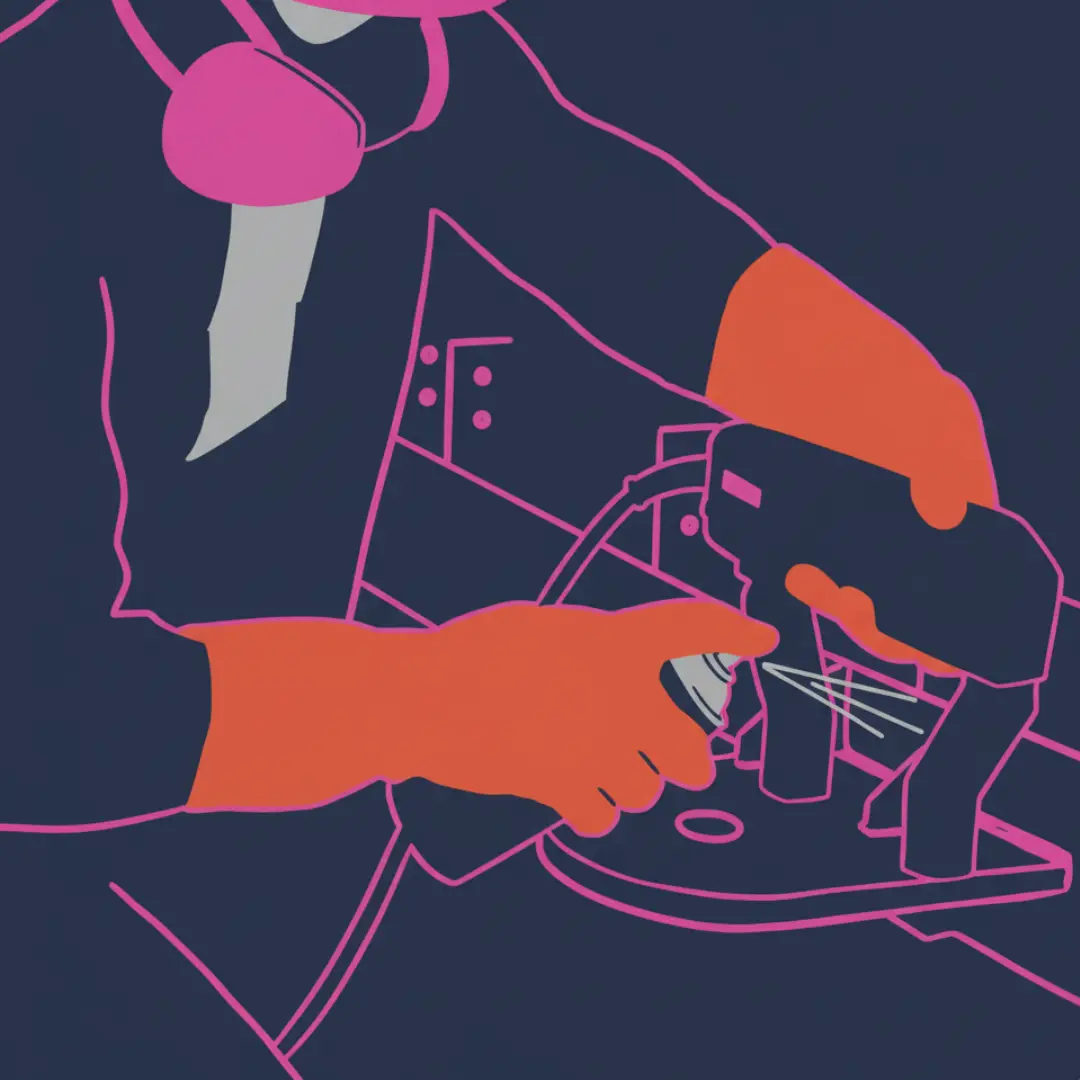Magnetic Particle Testing (MT) Jobs & Career Guide
Welcome to the essential career hub for Magnetic Particle Testing. Discover the latest MT jobs, from trainee to Level III, explore salary data, and get a complete guide to a successful career in this foundational NDT method.
Live Magnetic Particle Testing Job Openings
What is Magnetic Particle Testing?
Magnetic Particle Testing (MT), sometimes called Magnetic Particle Inspection (MPI), is a highly sensitive Non-Destructive Testing method used to locate surface and slightly subsurface discontinuities in ferromagnetic materials. It works on the principle of “magnetic flux leakage.”
The process begins by inducing a magnetic field into a part made of a material like iron, steel, or cobalt. If the part is free from defects, the magnetic field flows through it undisturbed. However, if a surface-breaking flaw like a crack is present, it creates a barrier. The magnetic field is forced to “leak” out of the part at the location of the flaw. This leakage field attracts finely milled iron particles that are applied to the surface. These particles build up and cluster directly over the flaw, creating a clear, visible indication of the defect’s location, size, and shape.
The iron particles can be either dry powders or suspended in a liquid and are often colored for contrast (visible MT) or coated with a fluorescent dye that glows brightly under a UV black light (fluorescent MT), which provides the highest level of sensitivity.

Key Industries Relying on MT

This is the most common method for inspecting the surface of welds on ferromagnetic materials like carbon steel, checking for cracks, lack of fusion, and porosity.

Used to inspect landing gear, engine components, and critical structural parts for fatigue cracks that could develop during service.

Essential for inspecting pipelines, pressure vessels, and drilling components for service-related cracking and defects.

A primary quality control tool for inspecting engine parts, crankshafts, gears, and other critical components for manufacturing flaws.

Used to inspect train wheels, axles, and tracks for fatigue cracks to ensure public safety and prevent derailments.
The Magnetic Particle Testing (MT) Career Path & Certifications
01
MT Trainee / Assistant
As a trainee, you will learn the core principles of the method under the direct supervision of certified technicians. Your work will focus on the practical steps: proper surface preparation, assisting with equipment setup (like yokes and coils), and the correct application of the magnetic particles.


02
MT Level I Technician
After completing formal training (typically 12-20 hours) and the required on-the-job training, you can certify as a Level I. A Level I is qualified to perform the MT inspection according to a specific procedure. You will magnetize the part, apply the particles, and report any indications you observe, all under the guidance of a Level II or III.
03
MT Level II Technician
This is the core professional role. An MT Level II has the experience and knowledge to independently set up and calibrate equipment, perform the inspection, and interpret and evaluate the results. They are skilled in choosing the right technique for the job, distinguishing between relevant and non-relevant indications, and sentencing parts based on code acceptance criteria.


04
MT Level III Technician
The resident expert. An MT Level III develops and validates the company’s Magnetic Particle Testing procedures, ensuring they meet code requirements. They are also qualified to train and certify Level I and II personnel and act as the final authority on complex inspection challenges.
Magnetic Particle Testing Salary Expectations
| Certification Level | Experience Level | Average Salary Range (USD) |
|---|---|---|
| NDT Trainee | 0-1 Year | $38,000 – $52,000 |
| MT Level I | 1-2 Years | $48,000 – $62,000 |
| MT Level II | 2-5+ Years | $60,000 – $85,000+ |
| MT Level III | 5-10+ Years | $85,000 – $135,000+ |
*Disclaimer: Salaries can vary based on location, industry, and possessing multiple NDT certifications. A technician certified in MT, PT, and UT/RT is a highly sought-after and well-compensated professional.
Level Up Your Career: Insights from Our NDT Blog
-

- October 15, 2025
- Career Growth
How to Leverage Your Military Experience for NDT...
The transition from military service to a civilian career is a journey in search of purpose. For those who have…
-

- October 15, 2025
- Career Growth
Gaining Management skills as an NDT Professional: Your...
In the world of Non-Destructive Testing, technical mastery is the foundation of your career. You’ve spent years honing your skills…
-

- October 15, 2025
- Career Growth
The Top 5 Certifications That Will Accelerate Your...
You’ve mastered the fundamentals of NDT. You hold a Level II certification, you’re a reliable inspector, and you’ve proven your…
The path to Level II in MT is relatively fast. It typically requires 12-20 hours of formal classroom training and a total of 210 hours of on-the-job experience (70 as a trainee, 140 as a Level I) to be eligible for the Level II exams. This can often be achieved in under a year.
MT can only be used on ferromagnetic materials—materials that can be strongly magnetized. This includes most types of iron, steel, nickel, and cobalt. It cannot be used on materials like aluminum, stainless steel, or copper.
Visible MT uses particles (often black or red) that create a clear color contrast against a white background, making it suitable for field inspections in good light. Fluorescent MT uses particles that glow a bright yellow-green under a UV black light. This method is significantly more sensitive and is the preferred choice for detecting very fine fatigue cracks in critical industries like aerospace.
Yes, to a limited extent. MT is excellent for finding defects open to the surface, but it can also detect some “near-surface” defects that are just below the surface. However, it cannot find deep internal flaws; methods like UT or RT are required for that.

